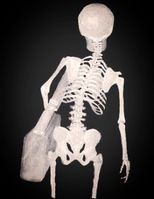Where do posture imbalances come from? This is a question that can be hard to answer specifically at the time most people ask it, but let's talk about 10 common causes of posture imbalances and what you can do about them.
1. Slouching while sitting.
Slouching typically consists of rounding the spine into flexion. When sitting this usually involves tipping the pelvic posteriorly, losing the normal lumbar extension, creating thoracic kyphosis, rounding the shoulders, and jutting the head forward. Chronic slouching causes laxity of spinal ligaments, weakness in spinal extensor muscles and hip flexors, and causes the body to learn that this posture is normal.
The fix: Focus on sitting up straight with a small arch in your lower back, shoulders back, and head upright. Take frequent breaks from sitting to stand, walk, stretch, and move.
2. Carrying things on one side of your body.
Do you always carry shopping bags or cases in the same hand? Do you sling your backpack, laptop bag, or handbag over the same shoulder? This overuse of one arm and shoulder will cause one shoulder to drop lower than the other and often rotate forward. This creates imbalances that continue down your spine and into your hips. A recipe for neck, shoulder, back, and hip pain.
The fix: Switch arms and shoulders frequently. When you catch yourself using your favorite arm or shoulder to carry something, make yourself switch sides. Also try to carry one bag of shopping in each arm to even yourself out.
3. Standing on your dominate leg.
Over time most people have developed a dominant leg that is stronger and more stable than the other side and this can cause problems. Do you catch yourself standing on one leg repeatedly? Do you shift your hips to side when standing relaxed? Just as using one arm to carry a heavy bag, using one leg to stand on or shifting your hips has the same affect on your body: throwing it out of balance.
The fix: Focus on standing on both feet and hips evenly. One trick is to turn your toes in so you feel slightly pigeon toed which will align your hips symmetrically.
4. Looking down at your mobile.
Mobile phones can be wonderful, but looking down consistently at your phone can wreck havoc on your posture. Text neck has become a huge phenomenon because of all the looking down at mobiles people do.
The fix: Hold your phone up in front of you when using it and try to limit overall phone use. The less time you spend on your phone, the better your posture will be and the better you will feel.
5. Leading with the same foot when climbing stairs or a ladder.
This goes right along with the standing on one foot; using the same foot and leg to lift your body weight up will create big muscular imbalances throughout your lower body and postural compensation in the upper body.
The fix: Alternate feet when walking up stairs. Hold onto the handrails to stabilize yourself if needed, but make sure to alternate which foot goes up first to balance your strength and function. For optimal function, point your feet straight ahead, which will feel slightly pigeon toed for most people.
6. Doing the same thing every day.
Doing the same things every day creates monotony in the body and will lead to muscle, joint, and posture imbalances. Here's an example: Let's say this is your daily routine: Get up, take a shower, sit to eat breakfast, drive 45 minutes to work, sit at work for most of the 8 hours except for several walks to talk to coworkers, drive 15 minutes to the gym after work, ride the stationary bike for 30 minutes, do 7 weight lifting machines (sitting chest press, sitting row, sitting leg press, sitting leg extension, sitting leg curl, sitting bicep curl, sitting tricep extension), shower, drive 30 minutes home, sit to eat dinner, sit and watch TV for 2 hours, go to bed. Yes, this person exercised for 60 minutes a day, but all the exercise was done sitting, and doing the same exercises every day lead to muscle imbalances.
The fix: The body is designed for a variety of motion on a daily basis, not the same motions every day. This person would be much better off doing 7 different weight lifting exercises each time they went to the gym and alternating the type of cardio they did (jump rope, running, cross-country ski machine, step-mill or stair climb machine, play basketball, play tennis, etc).
7. Wearing shoes.
Over 95% of shoes on the market interfere with normal foot movement and posture and wreak havoc on the body. Most shoes have a heel wedge or "drop" - meaning the heel is higher than the front of the shoe. Since the entire human body is supported by the foot, an uneven platform of a shoe causes compensation throughout the rest of the body's joints. Most shoes on the market also have toe-spring (meaning the front of the shoe is angled upward deforming the toes), toe-taper (meaning the toe box is widest at the ball of the foot and narrows toward the toes causing the toes to lose their normal wide spacing), and are stiff. Stiff shoes limit the movement of the joints of the foot and weaken the muscles of the foot and lower leg.
The fix: Go barefoot as much as possible to allow your toes to spread, feet to move naturally, and muscles of the foot to regain their strength. When you must wear shoes, find shoes that are flat, flexible, and widest at the toes.
8. Being sedentary/not moving enough.
As infants, we are born with a c-curved spine, bowed legs, and flat feet. Only through movement do we develop s-curved spines, straight legs, and arches in our feet. Fetuses start moving in the womb and continue moving every-which-way they can from the time they are born and all that movement is essential to normal and healthy physical and mental development. We often forget that not only is movement essential to development but also for maintenance of our physical and mental states. A sedentary lifestyle quickly leads to breakdown of our physical bodies and posture imbalances.
The Fix: Act like a kid: move, explore, run, jump, climb, dance, and play on a daily basis. Do a variety of physical things every day and week to maintain well-rounded strength, flexibility, agility, balance, and physical capacity. The more you move the healthier you become.
9. Playing just one sport.
Let's play a game! You name the sport, I name the imbalance it creates. Swimming: posterior pelvic tilt and rounded shoulders. Tennis: "gorilla arm" or the massive muscle development of one arm (dominant) compared to the other (non-dominant). Golf: elevated shoulder and hip. Cycling: swayback posture and thoracic flexion. Ballet: abducted feet and posterior pelvic tilt. Soccer: externally rotated femurs. Playing the same sport puts repeated and imbalanced demands on the body creating posture imbalance and eventual pain and injury.
The Fix: Play different sports and do different activities. Cross-train. Even if you are in love with (or play professionally) one sport, playing other sports will make you a more well-rounded athlete and less injury-prone. If you are a swimmer, running will improve your hip strength and kicking power. If you are a tennis player, playing soccer will improve your footwork for tennis. If you are a golfer, playing basketball will improve your agility, balance, and coordination for golf.
10. Your attitude and mental state.
Feeling stressed, hopeless, depressed, pessimistic, or skeptical can all lead to posture imbalances. These emotional states all lead to you rounding your shoulders and head forward, collapsing your chest, and closing off your heart from the world. Feeling this way also leads to inactivity exacerbating the posture imbalances. Skepticism is slightly different from the other feelings above in how it affects posture. Skepticism is having a doubting and untrusting attitude, which causes the body to twist and contort. This causes torso and hip rotation, uneven shoulders and hips, and unequal loading - all recipes for injury and pain.
The Fix: Do things that help you find peace of mind, gratitude, hope, optimism, and trust. Meditation has been proven to be very helpful. Mindfulness, acupuncture, massage, journaling, talking with friends, being in nature, and going for a walk or run outside can all help.


